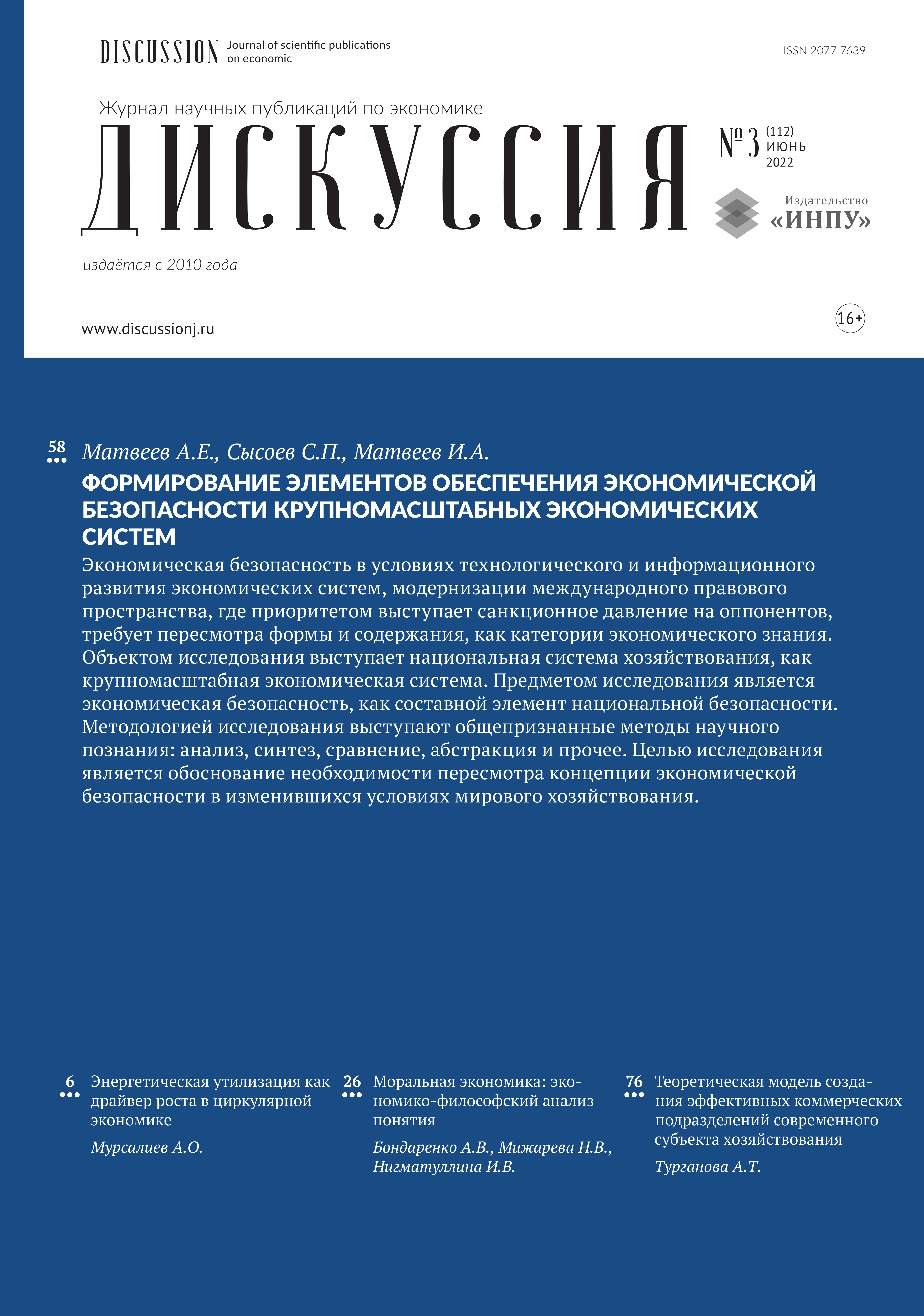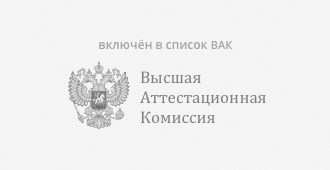Updating the method of monetary conversion of remuneration for work within the concept of assessing the value of human capital
Keywords:
Human capital, remuneration monetary conversion method, future salary, discount rate, return on equityAbstract
The economic formation of the present time is characterized by innovative processes occurring at all levels of organization of economic systems. The object of the study is a complex of knowledge, skills, abilities that characterize conscious human activity and form the concept of human capital. The subject of the study is salary as an economic category that reflects the cost of remuneration for a person’s labor activity within the framework of the economy of the People’s Republic of China. The purpose of the study is to update the method of monetary conversion of the cost of remuneration for the labor activity of a person. The objectives of the study are: 1. The study of theoretical sources of the subject area; 2. Consideration on a scientific basis of the traditional method of monetary conversion of remuneration for work adopted in the People’s Republic of China; 3. Scientific substantiation of the actualization of the method of monetary conversion of the remuneration of labor activity within the framework of the concept of human capital; 4. Practical approval of the proposed method of monetary conversion of remuneration for work in the activities of the subject of economic relations of the People’s Republic of China. The research methodology is a theoretical and heuristic approach, based on economic methods of cognition.The results of the study are a calculation formula for the method of monetary conversion of remuneration in the form of the cost of future salary in accordance with modern economic and social conditions. The essence of the proposed updating of the method is to divide the income from the monthly remuneration of employees into direct income (salary after taxes, allowances, overtime pay, bonuses, etc.) and indirect income, which is not paid to the employee and is a monthly compulsory national insurance, paid by the company to employees (retirement insurance, health insurance, work injury insurance, unemployment insurance, and maternity insurance). The authors also presented the evaluation of the method at the Chinese enterprise Goertek to calculate the value of the human capital of the enterprise for seven years, and at the same time, the advantages and disadvantages of the improved model in practice were analyzed.
Downloads
Metrics
References
Нестеров Л., Аширова Г. Национальное богатство и человеческий капитал. // Вопросы экономики. – 2003. – № 2. – С. 103–110.
Fisher I. The nature of capital and income[M]. Macmillan and Cie, 1906.
Е Лю. Влияние национальных инвестиций в человеческий капитал на прирост индивидуального человеческого капитала в Китае. // Российский экономический вестник. – 2022. – Т. 5. – № 2. – С. 123–130.
Е Лю. Человеческий капитал как фактор долгосрочного развития инновационных предприятий в Китае. // Гуманитарные, социально-экономические и общественные науки. – 25.04.2022. – № 4. – С. 201–206.
Е Лю, Фу Юаньюань. Человеческий капитал в Китае в инновационной экономике. // Сборник научных трудов «Система знаний: процессы развития современной научной мысли». Общество Науки и Творчества. – Казань, 2021. – С. 7–11.
Lev B, Schwartz A. On the use of the economic concept of human capital in financial statements[J]. The accounting review, 1971, 46(1): 103-112. [Электронный ресурс]. URL: https://www.jstor.org/stable/243891
Шульц Т.В. Инвестиции в человеческий капитал. // Американский экономический обзор. – 1961. – Т. 51. – № 1. – С. 1–17.
Nile W. Hatch, Jeffrey H. Dyer. Human capital and learning as a source of sustainable competitive advantage[J]. Strategic Management Journal, 2004, 25 (12):15.
Ли Цзяньмин. Общая теория человеческого капитала. // Шанхай Шаньлянь. – 1999. – С. 123–127.
Flamholtz, E.G. Should your organization attempt to value it humanresources?[J]. California Management Review, winter 1971:40-45.
Brandenburg Stefanie G, Haas Carl T, Byrom Keith, et.al. Strategic Management of Human Resources in Construction[J].Journal of Management in Engineering. 2006. (3): 89-96
Downloads
Published
How to Cite
Issue
Section
Categories
License
Copyright (c) 2022 Е Лю, В. М. Макаров , Фу Юаньюань

This work is licensed under a Creative Commons Attribution-NonCommercial-NoDerivatives 4.0 International License.
Авторы, публикующие произведения в журнале «Дискуссия», соглашаются со следующими условиями:
- Авторы сохраняют за собой авторское право и предоставляют журналу право первой публикации произведения, одновременно лицензированной в соответствии с лицензией Creative Commons Attribution, позволяющей другим лицам пользоваться произведением с подтверждением авторства и первоначальной публикации в журнале «Дискуссия».
- Авторы вправе заключать с иными лицами лицензионные договоры на условиях простой (неисключительной) лицензии на использование опубликованного в журнале «Дискуссия» произведения (например, размещение его в базах данных университетов, публикация в книге), со ссылкой на его оригинальную публикацию в этом журнале.
- Автор гарантирует, что является правообладателем всех материалов, предоставляемых в редакцию, и что исключительные права на данные материалы не переданы или не предоставлены другим лицам.
- Авторам разрешено и рекомендуется размещать свое произведение в Интернете до и во время процесса подачи, поскольку это может привести к продуктивному обмену, а также к более раннему и более широкому цитированию опубликованных работ.
С момента загрузки произведения и сопроводительных материалов через раздел "Отправка материалов", автор полностью и безоговорочно принимает (акцептует) публичную оферту о заключении авторского соглашения об опубликовании произведения. В соотвтетствии с этим соглашением автор предоставляет издателю на безвозмездной основе неисключительную лицензию на использование созданного автором произведения.
С момента получения произведения и прилагаемых к нему материалов журнал "Дискуссия" вправе использовать полученные произведения без ограничений по своему усмотрению и в пределах всего срока действия исключительных прав, но с обязательным указанием имени автора (авторов) произведения, в том числе публиковать произведения (полностью или в сокращении) на территории всего мира, переводить на другие языки, направлять в репозитории научной информации, размещать в сети Интернет и использовать другими законными способами.









